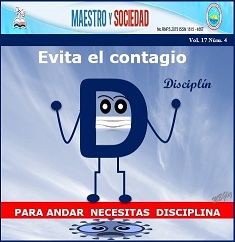Array Array
Array
Palavras-chave:
Array, ArrayResumo
ArrayReferências
Ballard-Barbash, R., Friedenreich, C. M., Courneya, K. S., Siddiqi, S. M., & McTiernan, A. (2012). Physical activity, biomarkers, and disease outcomes in cancer survivors: a systematic review. Journal of the National Cancer Institute, 104(11), 815-840.
Cárdenas, Y. A., Zamora, X. A., & Calero, S. (Abril de 2016). Incidence of the practice of taekwondo in the academic performance of 6-16 year old students. Lecturas: educación física y deportes, 21(215), 1-14.
Chelladurai, P., & Madella, A. (2006). Human resource management in Olympic sport organisations. USA: Human Kinetics Publishers.
Fong, Shirley, N., Shamay, Chung, & Louisa. (2013). Health through martial arts training: Physical training and reaction time in adolescent Taekwondo practitioners. Health, 5(6A3), 1-5.
Garcia, A. C. (2015). Estructuración de los programas recreativos universitarios. Educación Física y Deporte, 5(1), 27-34.
Hall, C. M., & Page, S. J. (2014). The geography of tourism and recreation: Environment, place and space. USA: Routledge.
Hay, J. A. (1992). Adequacy in and predilection for physical activity in children. Clinical Journal of Sport Medicine, 2, 192-201.
Hurd, A. R., & Anderson, D. M. (2010). The park and recreation professional's handbook. USA: Human Kinetics.
Lino, R., & Augusto, B. (2015). Actividades físicas recreativas para la prevención de conductas inadecuadas en los estudiantes de tercer Año de bachillerato especialidad químico biológicas sección vespertina del colegio mixto particular UPSE, cantón cantón La Libertad. (bachelorThesis).Universidad Estatal Peninsula de Santa Elena, Ciencias Sociales, Santa Elena.
Marcos, G. (2015). Actividades recreativas en adultos mayores internos en un hogar de ancianos. Revista Cubana de Salud Pública, 41(1).
Murcia, J. A., Galindo, M. C., Pérez, L. M., Coll, M. V., & Lucas, J. M. (2011). Validation of the Spanish version of the children s self-perceptions of adequacy in and predilection for physical activity (CSAPPA) questionnaire. Psychology, Society & Education, 3(2), 113-132.
Parizkova, J. (2016). Nutrition, physical activity, and health in early life. CRC Press.
Paucar, M. G., Pisuña, H. V., Calero, S., Coral, E. G., Loachamin, E. M., y Rodríguez, M. P. (2017). Integrated training vs traditional training in senior taekwondo practitioners. Lecturas: educación física y deportes, 21(224), 1-17.
Pérez, C. F., Samdal, O., Torres, I. E., y Solves, O. Á. (2013). Estructuración de la estrategia para organizar actividades físico-deportivas y recreativas. Revista iberoamericana de psicología del ejercicio y el deporte, 8(2), 373-391.
Pons Van Dijk, G., Lenssen, A., Leffers, P. K., Kingma, H., & Lodder, J. (2013). Taekwondo training improves balance in volunteers over 40. Frontiers in aging neuroscience, 5(10).
Rosa, S. M. (2013). Actividad física y salud. Madrid: Ediciones Díaz de Santos.
Sallis, J. F., Floyd, M. F., Rodríguez, D. A., & Saelens, B. E. (2012). Role of built environments in physical activity, obesity, and cardiovascular disease. Circulation, 5, 729-737.
Tappe, K. A., Glanz , K., Sallis, J. F., Zhou, C., & Saelens, B. E. (2013). Children’s physical activity and parents’ perception of the neighborhood environment: neighborhood impact on kids study. International journal of behavioral nutrition and physical activity, 10(1), 1.
Van Holle, V., Deforche, B., Van Cauwenberg, J., Goubert, L., Maes, L., Van de Weghe, N., & De Bourdeaudhuij, I. (2012). Relationship between the physical environment and different domains of physical activity in European adults: a systematic review. BMC public health, 12(1), 1.
Publicado
Como Citar
Edição
Seção
Licença
Esta revista proporciona un acceso abierto inmediato a su contenido, basado en el principio de que ofrecer al público un acceso libre a las investigaciones ayuda a un mayor intercambio global de conocimiento. Cada autor es responsable del contenido de cada uno de sus artículos. Los artículos pueden ser inéditos o estar disponibles previamente en servidores de preprints reconocidos por la revista. Sin embargo, no se permite la duplicación de la publicación o traducción de un artículo ya publicado en otra revista o como capítulo de un libro.
This journal provides immediate open access to its content, based on the principle that providing the public with free access to research supports a greater global exchange of knowledge. Each author is responsible for the content of each of their articles. Articles may be previously unpublished or available on preprint servers recognized by the journal. However, duplication of publication or translation of an article already published in another journal or as a book chapter is not permitted.
Esta revista oferece acesso aberto imediato ao seu conteúdo, com base no princípio de que oferecer ao público acesso gratuito à pesquisa contribui para um maior intercâmbio global de conhecimento. Cada autor é responsável pelo conteúdo de cada um de seus artigos. Os artigos poderão ser inéditos ou estar previamente disponíveis em servidores de preprints reconhecidos pela revista. No entanto, não é permitida a duplicação de publicação ou tradução de artigo já publicado em outro periódico ou como capítulo de livro.



























 Universidad de Oriente
Universidad de Oriente 